Iran
Welcome to Iran
Afghanistan, a land of rugged mountains, ancient history, and rich cultural heritage, is gradually re-emerging as a destination for adventurous travelers in 2025. Despite decades of conflict, the country offers unique experiences for those willing to explore its breathtaking landscapes, historic sites, and vibrant bazaars. With careful planning and respect for local customs, visitors can discover a side of Afghanistan few outsiders have seen.
With a civilization dating back thousands of years, Iran is home to remarkable archaeological sites, stunning architecture, and diverse landscapes ranging from vast deserts to lush mountains. Major cities like Tehran, Isfahan, Shiraz, and Yazd showcase a captivating mix of tradition and contemporary culture, inviting visitors to explore bustling bazaars, exquisite mosques, and serene gardens. Beyond its historical treasures, Iran is known for the warmth and hospitality of its people, making it a destination that leaves a lasting impression on every traveler.
1.
Rich Cultural Heritage: Iran boasts some of the world’s most impressive historical sites, including the ancient ruins of Persepolis, the exquisite Nasir al-Mulk Mosque in Shiraz, and the UNESCO-listed Golestan Palace in Tehran. These landmarks offer a glimpse into the grandeur of Persian civilization and architectural mastery.
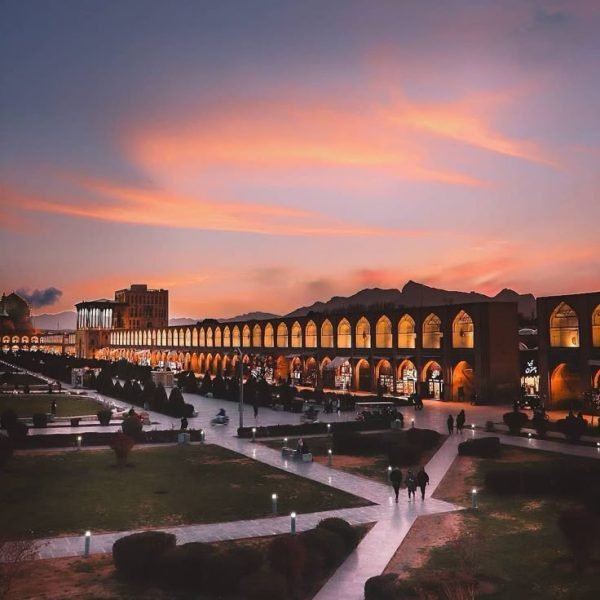
2.
Diverse Natural Beauty: From the snow-capped peaks of the Alborz Mountains to the vast deserts of Dasht-e Kavir and the lush gardens of Kashan, Iran’s landscapes are incredibly varied and breathtaking. Whether you seek adventure, tranquility, or cultural immersion, Iran’s natural settings provide unforgettable experiences.
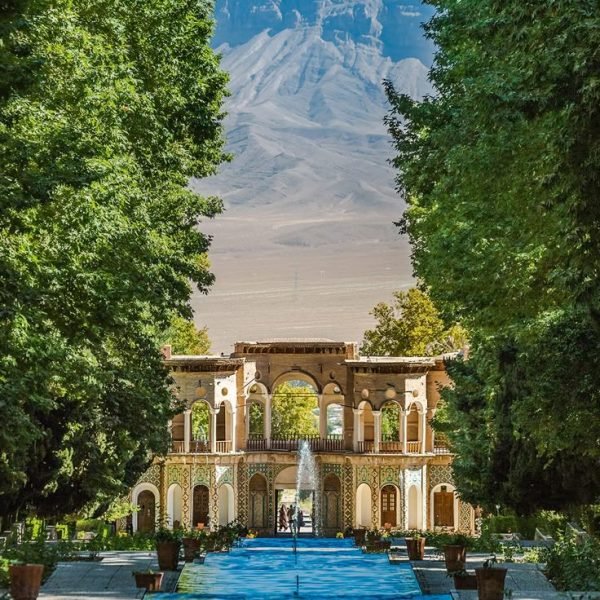
Planning Your Trip
Visa Information
Travelers to Iran in 2025 must secure the appropriate visa before arrival. Visa policies vary depending on nationality, but generally, visitors can apply for tourist visas through Iranian embassies or consulates. Some nationalities may be eligible for an e-visa or visa on arrival, but it is advisable to check the latest requirements well in advance. Note that travelers from certain countries, such as the United States, Canada, and the UK, often need to join guided tours due to diplomatic restrictions. Always ensure your visa is valid for the duration of your stay and carry identification at all times while in Iran.
Best Time to Visit
The ideal time to visit Iran is during the spring (March to May) and autumn (September to November) months. During these periods, the weather is mild and pleasant across most regions, perfect for sightseeing and outdoor activities. Summers can be extremely hot, especially in desert areas, while winters are cold in the mountainous north. Planning your trip around these seasons will help you enjoy Iran’s attractions comfortably.
Getting To and Around
- Getting There: Iran is accessible via several international airports, with Tehran’s Imam Khomeini International Airport being the main gateway. Other airports in cities like Shiraz, Isfahan, and Mashhad also receive international flights. Due to some restrictions, booking flights might require extra planning, and travelers should consider local airlines for domestic connections.
- Transportation Within Iran: Iran has a well-developed transportation network. Domestic flights connect major cities efficiently. For shorter distances, trains and long-distance buses offer affordable and comfortable options. Within cities, taxis and ride-hailing apps are common, but be prepared for traffic conditions that may differ from Western standards. Driving is possible with an International Driver’s Permit, but caution is advised due to local driving habits and road conditions.
- Safety Note: While Iran is generally safe for tourists, it is important to stay informed about local laws and customs. Road safety can be a concern due to high accident rates and different traffic norms. Always carry identification, avoid disputes, and follow official advice on travel and security.
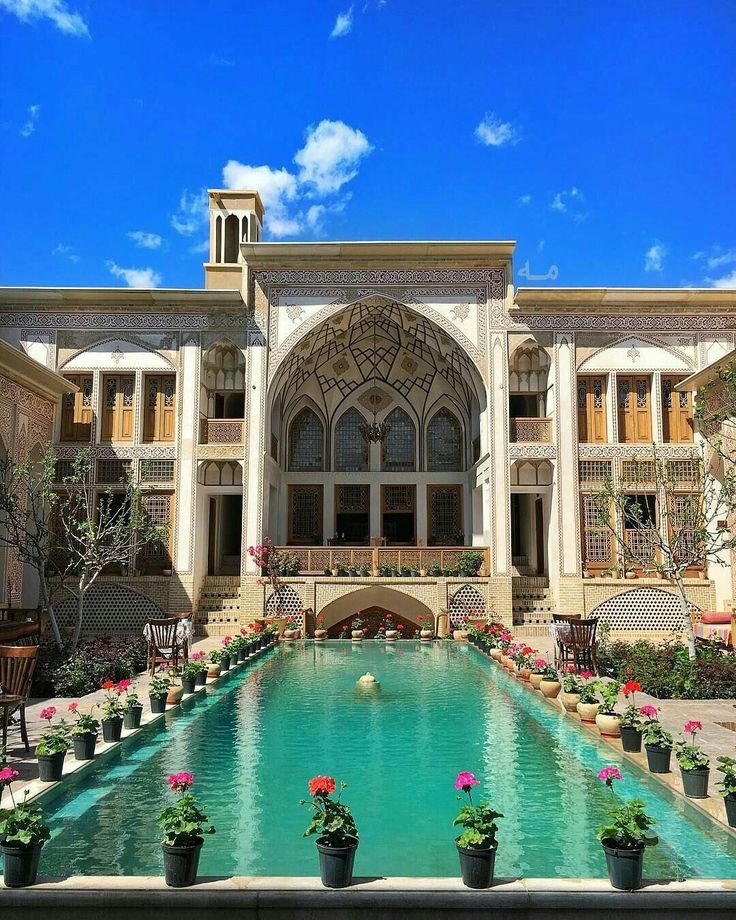
Accommodation
When traveling to Iran in 2025, accommodation options are diverse and cater to a wide range of tastes, budgets, and travel styles. Whether you seek the luxury of a five-star hotel, the charm of a traditional Persian guesthouse, or the social vibe of a hostel, Iran offers something for every traveler.
Accommodation Options
Hotels
Iran’s hotel scene is well-developed, especially in major cities like Tehran, Isfahan, Shiraz, and Yazd. You can find hotels ranging from budget-friendly two-star establishments to opulent five-star palaces. Modern hotels often feature amenities such as swimming pools, fitness centers, restaurants, and reliable Wi-Fi. Notable luxury hotels include the Espinas Palace Hotel in Tehran, Shiraz Grand Hotel, and the Chaharbagh Hotel in Isfahan, all offering high standards of comfort and service.
Traditional hotels are a unique and culturally immersive option. Many are beautifully restored historic houses or caravanserais that blend Persian architectural heritage with modern comforts. Staying in such hotels allows you to experience Iranian hospitality firsthand, often in settings that reflect the local climate and culture. Examples include the Abbasi Hotel and Sarhang Palace in Isfahan, Saraye Ameriha Hotel in Kashan, and Dad Hotel in Yazd. These traditional hotels often provide a boutique experience with elegant courtyards, intricate tile work, and cozy atmospheres.
Hostels and Budget Stays
For budget travelers and backpackers, Iran has a growing number of hostels in cities like Tehran, Isfahan, Shiraz, Yazd, and Kashan. These hostels offer mixed and gender-specific dormitories as well as private rooms, creating opportunities to meet fellow travelers. Hostels such as RagRug Hostel in Isfahan are praised for their cleanliness, friendly staff, social spaces, and included breakfast. They provide reliable Wi-Fi and a relaxed environment, making them a popular choice for solo travelers and those on a budget.
Guesthouses and Homestays
Guesthouses are another affordable and authentic accommodation option. Often located in historic neighborhoods, they provide a homely atmosphere and a chance to connect with local culture. While official tourism regulations require foreigners to stay in licensed accommodations, it is common for Iranians to invite visitors into their homes for tea or meals, reflecting the deep-rooted hospitality of the people.
Camping and Nomadic Stays
For nature lovers and adventure seekers, camping is available in Iran’s deserts, mountains, and coastal areas. Eco-camps like Lut Star Eco Camp and Matinabad Desert Camp offer comfortable setups in scenic locations. Additionally, nomadic tourism is popular, allowing visitors to stay with Iranian nomads in traditional tents and experience their lifestyle firsthand. These immersive experiences can be arranged through local tour operators.

Food and Drink
Iranian cuisine is a rich tapestry of flavors, colors, and aromas, shaped by centuries of cultural exchange and regional diversity. Food is an essential part of Iranian hospitality and culture, and sampling local dishes is a highlight of any trip.
Traditional Iranian Cuisine
Iranian food is known for its balance of herbs, spices, and fresh ingredients. Staples include rice, bread, lamb, chicken, fish, vegetables, and a variety of herbs. Saffron, dried lime, cinnamon, and turmeric are commonly used to create complex yet harmonious flavors.
- Rice Dishes: Persian rice, or polow, is often prepared with a crispy golden crust called tahdig, considered a delicacy. Popular rice dishes include chelo kebab (steamed rice served with grilled meat), zereshk polow (rice with barberries and saffron), and baghali polow (rice with dill and fava beans).
- Kebabs: Grilled meats are a cornerstone of Iranian cuisine. Varieties include koobideh (minced meat), joojeh (chicken), and barg (filet mignon). Kebabs are usually served with rice or flatbread and grilled tomatoes.
- Stews and Soups: Iranian stews, or khoresht, combine meat or vegetables with herbs and fruits. Favorites include ghormeh sabzi (herb stew with kidney beans and lamb), fesenjan (pomegranate and walnut stew), and gheimeh (split pea stew with dried lime). Soups like ash reshteh (thick noodle and bean soup) are also popular.
- Bread: Various types of bread are baked daily, including sangak (stone-baked flatbread), barbari (thick and soft), and lavash (thin flatbread).
Snacks and Sweets
Iranian snacks and sweets are integral to the culinary experience. Faludeh, a refreshing dessert made from thin vermicelli noodles in rosewater syrup, is popular in summer. Baklava, sohan (a saffron brittle), and gaz (nougat with pistachios) are beloved sweets often enjoyed with tea.
Beverages
Tea (chai) is the national drink and is served throughout the day, often accompanied by sweets. Iranian tea culture is a social ritual, with tea served in small glasses with sugar cubes or rock candy. Other traditional drinks include doogh, a refreshing yogurt-based beverage flavored with mint, and sharbat, a sweet fruit syrup diluted with water.
Dining Etiquette
Meals in Iran are often communal and leisurely, emphasizing hospitality and connection. It is customary to wash hands before eating, and many meals are eaten with bread or rice using the right hand. Guests are typically offered multiple servings and refusing food outright may be considered impolite; a polite refusal followed by acceptance is common.
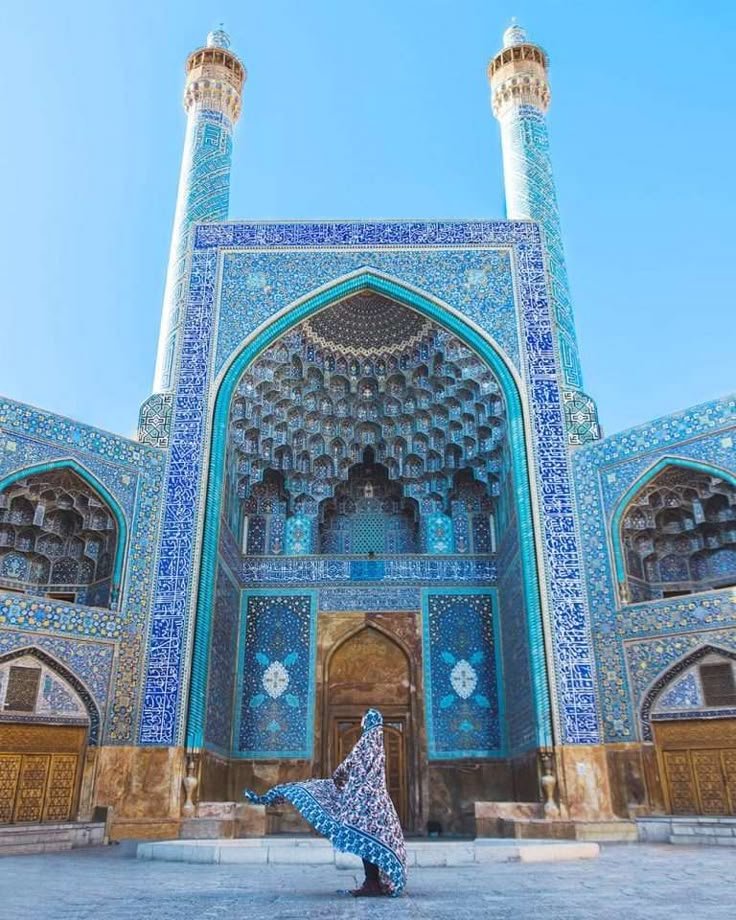
Must-See Attractions
Iran is a treasure trove of history, culture, and natural beauty, offering travelers a rich tapestry of experiences. Here are some of the most iconic and unforgettable sights to include in your 2025 itinerary:
- Persepolis
Persepolis, a UNESCO World Heritage site near Shiraz, is the ancient ceremonial capital of the Achaemenid Empire. Walking through its grand ruins, you’ll encounter massive stone terraces, intricately carved reliefs, and imposing columns that tell stories of Persian kings and empires long past. The site’s scale and preservation provide a vivid glimpse into one of the world’s greatest ancient civilizations, making it a must-visit for history enthusiasts.
- Naqsh-e Jahan Square (Isfahan)
This vast public square in Isfahan is surrounded by architectural masterpieces, including the Imam Mosque, Sheikh Lotfollah Mosque, and the Ali Qapu Palace. The square buzzes with life, from bustling bazaars to traditional tea houses. It is a UNESCO World Heritage site and a brilliant showcase of Safavid-era Persian architecture, art, and urban planning. The square’s symmetry, tilework, and atmosphere make it one of Iran’s most captivating landmarks.
- Golestan Palace (Tehran)
Located in Tehran, Golestan Palace is a splendid example of Qajar dynasty architecture. The palace complex features ornate tile work, mirrored halls, and lush gardens, reflecting the opulence of Iran’s royal past. It also houses several museums displaying Persian art and history. A visit here offers insight into Iran’s royal heritage and artistic achievements.
- Nasir al-Mulk Mosque (Shiraz)
Known as the Pink Mosque, this stunning mosque is famous for its dazzling stained glass windows that cast colorful patterns on the interior floors during the morning light. The intricate tile work and unique play of light create a magical ambiance. It is one of the most photographed and beloved sites in Iran, especially for lovers of architecture and photography.
- Yazd – The City of Windcatchers
Yazd is a desert city renowned for its ancient adobe architecture, narrow alleys, and ingenious windcatchers that provide natural cooling. It’s a UNESCO World Heritage site with highlights including the Amir Chakhmaq Complex, the Zoroastrian Fire Temple, and the Jameh Mosque with its soaring minarets. Yazd offers a deep cultural and historical experience, especially for those interested in ancient Persian desert life and Zoroastrian heritage.
- Bam Citadel (Kerman)
The ancient mud-brick citadel of Bam is one of the largest adobe structures in the world and a UNESCO World Heritage site. It offers a fascinating look at desert fortifications and urban planning from centuries ago. Nearby, the Shazdeh Garden, a Persian paradise garden, provides a refreshing contrast with its lush greenery and water features.
- Mashhad – Imam Reza Shrine
Mashhad is Iran’s spiritual capital, home to the magnificent shrine of Imam Reza, the eighth Shia Imam. The shrine complex is one of the largest in the world, attracting millions of pilgrims annually. Its intricate tile work, grand courtyards, and religious significance make it a profound cultural and spiritual destination.
- Tabiat Bridge (Tehran)
For a taste of modern Iran, the Tabiat Bridge in Tehran is a striking architectural landmark. This pedestrian bridge connects two parks and offers panoramic views of the city and the Alborz mountains. It’s a popular spot for locals and visitors to relax and enjoy urban nature.
- National Museum of Iran (Tehran)
This museum houses an extensive collection of artifacts spanning Iran’s ancient civilizations, including pottery, sculptures, and relics from the Elamite, Achaemenid, Parthian, and Sassanian periods. It is a must-visit to understand the depth and richness of Iranian history.
- Eram Garden (Shiraz)
A classic Persian garden, Eram Garden is known for its fragrant orange blossoms, tall cypress trees, and beautiful pavilion. It is a peaceful retreat that exemplifies Persian garden design, blending nature with art and architecture.
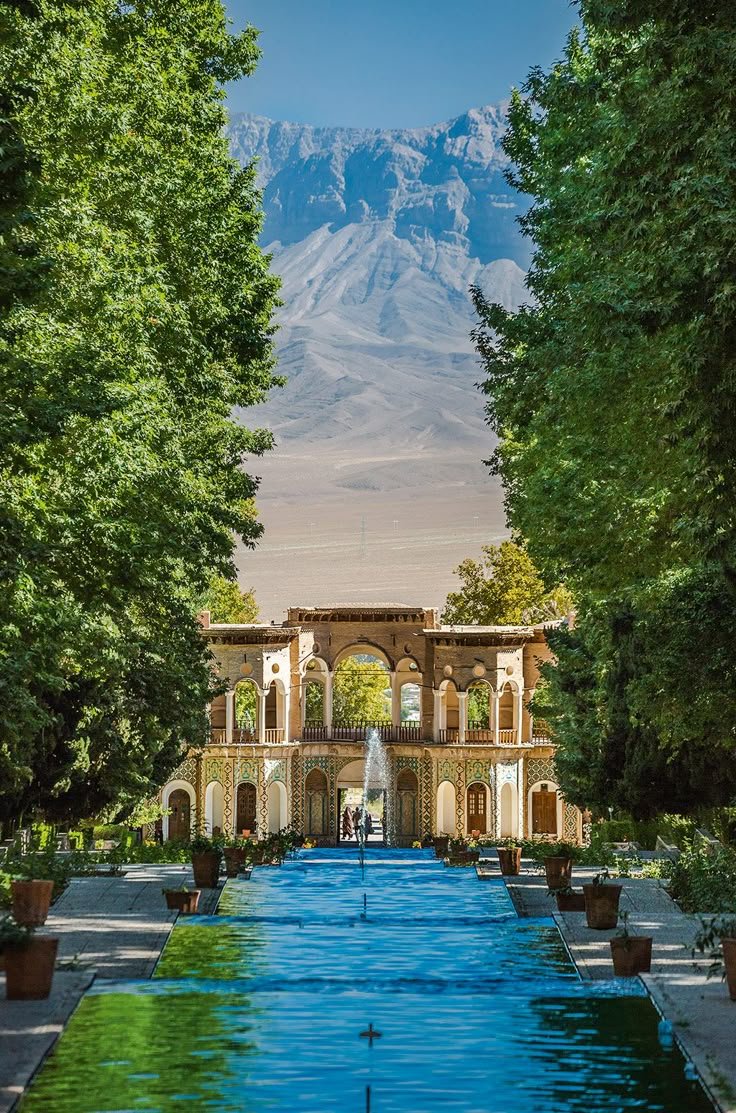
Must-Do Activities
Beyond sightseeing, Iran offers a wealth of activities that immerse you in its culture, nature, and vibrant daily life.
- Explore Traditional Bazaars
Iran’s bazaars are lively hubs of commerce and culture. The Grand Bazaar in Tehran, Vakil Bazaar in Shiraz, and Qeisarieh Bazaar in Isfahan offer everything from spices and carpets to handicrafts and jewelry. Wander through these labyrinthine markets to experience local life, haggle for souvenirs, and savor street food.
- Experience Persian Hospitality
Iranians are renowned for their warmth and hospitality. Accepting invitations for tea or a meal with locals can be one of the most rewarding experiences. Sharing stories over a cup of strong Persian tea or tasting homemade sweets offers a genuine connection to the culture.
- Wander Through Persian Gardens
Persian gardens are designed as earthly paradises, combining water, greenery, and architecture harmoniously. Besides Eram Garden, visit Chehel Sotoun in Isfahan and Fin Garden in Kashan. These gardens provide serene escapes and insights into Persian aesthetics and philosophy.
- Visit Historic Mosques and Palaces
Take time to admire the intricate tile work, calligraphy, and architecture of mosques like the Imam Mosque in Isfahan, Shah Mosque in Tehran, and the Jameh Mosque of Yazd. Palaces such as Ali Qapu and Sa’dabad offer glimpses into royal life and Persian art.
- Take a Desert Adventure
Iran’s deserts, such as the Dasht-e Kavir and Dasht-e Lut, offer unique landscapes for camping, stargazing, and experiencing nomadic culture. Join a guided tour to explore sand dunes, salt flats, and ancient caravan routes.
- Sample Iranian Cuisine
Participate in a food tour or cooking class to learn about Persian culinary traditions. Try dishes like chelo kebab, ghormeh sabzi (herb stew), and fesenjan (pomegranate walnut stew), and don’t miss the saffron-infused desserts and fresh fruit juices.
- Attend Cultural Festivals
If your visit coincides with Persian New Year (Nowruz) in March or other local festivals, take part in the celebrations. These events showcase traditional music, dance, crafts, and rituals, offering deep cultural insight.
- Explore Ancient Qanats
Discover the ancient underground water channels called qanats, especially in Yazd. These engineering marvels have sustained communities in arid regions for millennia and visiting them reveals Iran’s ingenuity in water management.
- Hike in the Alborz and Zagros Mountains
For nature lovers, hiking in the Alborz range near Tehran or the Zagros Mountains in western Iran offers stunning vistas, fresh air, and encounters with rural life. Popular trails include those near Mount Damavand, the highest peak in the Middle East.
- Visit Literary and Spiritual Sites
Iran’s rich literary heritage is celebrated at sites like the Tomb of Hafez and Sa’adi in Shiraz. These tranquil gardens and mausoleums invite reflection on Persian poetry and philosophy, integral to Iranian identity.

Travel Tips
Traveling to Iran in 2025 offers a fascinating journey into a land rich with history, culture, and warm hospitality. However, it also requires careful preparation and awareness of local customs, safety considerations, and language basics to ensure a smooth and enjoyable experience. Here are detailed travel tips to help you navigate Iran confidently and respectfully.
Safety Advice
- Security Situation and Travel Advisories
Iran is a country with complex political dynamics, and some governments advise against travel due to risks such as arbitrary detention, civil unrest, and regional tensions. Travelers should check the latest official travel advisories from their home countries before planning their trip. While many tourists visit Iran without incident and find it very safe, it is crucial to stay informed and exercise caution, especially if you are from countries with strained diplomatic relations with Iran. - Personal Safety and Crime
Iran generally has a low rate of street crime such as pickpocketing or mugging compared to many other countries. However, as in any destination, remain vigilant in crowded places like bazaars and public transport. Avoid flashing valuables and keep your belongings secure. Women travelers should be particularly cautious about dress codes and behavior to avoid unwanted attention or legal issues. - Road Safety
Road conditions in Iran can be challenging. Traffic is often chaotic, with drivers frequently ignoring traffic signals and lane markings. Night driving is particularly dangerous due to poor street lighting and reckless driving habits. Pedestrians should be cautious when crossing streets, as drivers rarely yield. It is advisable to avoid driving yourself unless you are very experienced with local conditions. Instead, use licensed taxis or trusted ride-hailing apps like Snapp or TAPSI. - Official Checkpoints and Identification
You may encounter police or military checkpoints, sometimes manned by young officers who may be suspicious of foreigners. Always carry your passport and visa with you, and remain calm and polite if stopped. Avoid confrontations and follow instructions carefully. - Health and Emergencies
Medical facilities in major cities like Tehran and Isfahan are generally adequate, with some English-speaking staff. In rural areas, medical services may be limited. Bring any necessary prescription medications with you, along with a translated prescription. Travel insurance that covers health emergencies and evacuation is essential. Emergency numbers in Iran include 110 for police, 115 for ambulance, and 125 for fire services. - Power Outages and Infrastructure
Power outages are common, especially in winter, and can affect lighting, telecommunications, and banking services. Carry a flashlight, power banks, and keep important documents and cash accessible.
Local Customs
- Dress Code
Iran enforces a conservative Islamic dress code, particularly for women. Women must wear a hijab (headscarf) and loose-fitting clothes that cover the arms and legs. Men should avoid shorts and sleeveless shirts in public. Dressing modestly is not only a legal requirement but also a sign of respect that will help you blend in and avoid unwanted attention. - Gender Interaction and Social Etiquette
Physical contact between unrelated men and women in public is generally prohibited. Avoid initiating handshakes or other physical contact with the opposite sex unless they do so first. Greetings are usually verbal or involve a nod or placing a hand over the heart. - Respect Religious Practices
Iran is an Islamic Republic, and religious observance plays a significant role in daily life. During the holy month of Ramadan, refrain from eating, drinking, or smoking in public during daylight hours. Be respectful during prayer times and religious holidays, and avoid loud behavior or public displays of affection. - Photography
Always ask permission before photographing people, especially women. Avoid taking pictures of government buildings, military sites, and infrastructure, as this can lead to trouble with authorities. - Hospitality and Interaction with Locals
Iranians are known for their warmth and hospitality. Visitors are often invited for tea or meals, and accepting such invitations can lead to memorable cultural exchanges. Showing respect for local customs and learning a few polite phrases in Farsi will deepen connections and enhance your experience.
Language Basics
While Persian (Farsi) is the official language, English is not widely spoken outside major tourist areas and among younger generations. Learning some basic Farsi phrases will be very helpful and appreciated by locals.
Common Phrases:
- Hello: Salam (سلام)
- Thank you: Mamnoon (ممنون) or Merci (مرسی)
- Please: Lotfan (لطفاً)
- Yes: Baleh (بله)
- No: Na (نه)
- Excuse me / Sorry: Bebakhshid (ببخشید)
- How much?: Cheghadr? (چقدر؟)
- Where is…?: Kojast…? (کجاست؟)
- Goodbye: Khodahafez (خداحافظ)
- I don’t understand: Motavajeh nemisham (متوجه نمیشم)
Using these phrases, even if imperfectly, can open doors and create goodwill.
Final Thoughts
Additional Practical Tips
- Money: Due to sanctions, international credit and debit cards do not work in Iran. Bring sufficient cash in Euros or US Dollars to exchange at official currency exchange offices. Keep cash and valuables secure, and use hotel safes when available.
- Transportation: Use official taxis or ride-hailing apps rather than hailing cabs on the street. Always negotiate fares in advance or insist on using the meter.
- Communication: SIM cards and mobile internet are available, but check compatibility with your phone. Wi-Fi is commonly available in hotels and cafes.
- Respect for Laws: Iran has strict laws on drug possession, alcohol consumption, and public behavior. Penalties can be severe. Avoid any illegal substances and do not attempt to bring alcohol into the country.
Traveling in Iran in 2025 requires careful preparation, respect for local customs, and awareness of safety considerations. While some official advisories caution against travel due to political risks, many visitors experience Iran as a safe and welcoming country. Modest dress, polite behavior, and cultural sensitivity will help you navigate social norms smoothly. Learning basic Farsi phrases and understanding practical matters like money and transportation will enhance your journey. By staying informed, respecting the culture, and exercising common-sense precautions, you can enjoy a rich and rewarding experience in this ancient and fascinating land.

